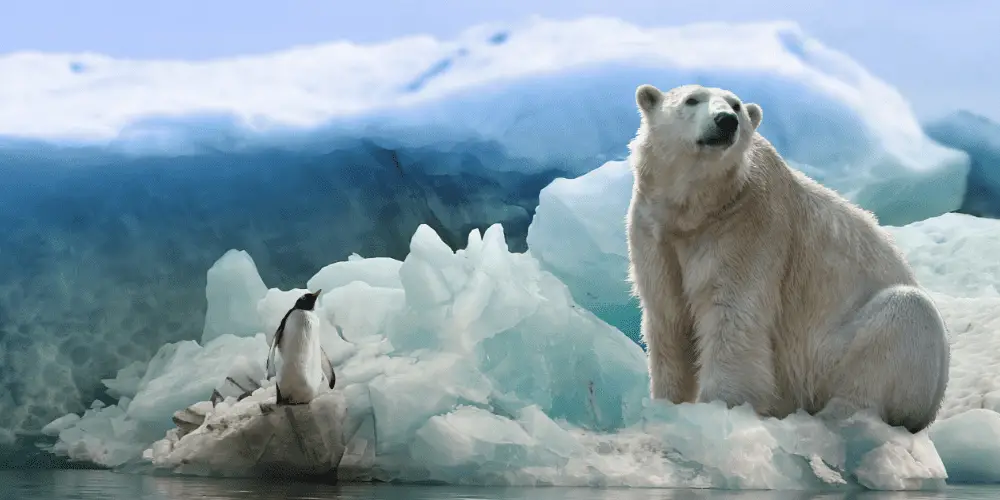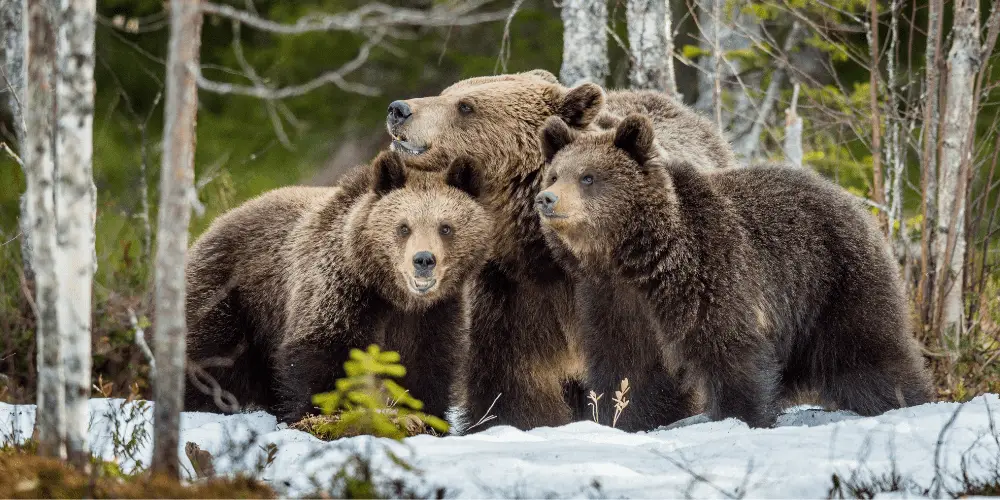Regarding polar bears and penguins, there are a few misconceptions surrounding these beloved animals. One such misconception is that polar bears live near penguins and might prey on these little flightless birds. But do polar bears actually eat penguins?
Polar bears do not eat penguins. Polar bears and penguins live in two very different regions; polar bears live in the Arctic, while penguins are found in Antarctica, so they never come into contact with each other.
What Separates Polar Bears and Penguins?

One of the primary reasons why polar bears and penguins never interact is the vast geographical barrier between them.
The Arctic and Antarctica are separated by thousands of miles, with the Arctic located in the Northern Hemisphere and Antarctica in the Southern Hemisphere.
These two regions have distinct ecosystems and environmental conditions, further explaining why these two species are never found together.
Now that we’ve cleared up the misconception about polar bears eating penguins let’s dive deeper into the world of polar bears, including their diet, habitat, and other interesting facts.
What Do Polar Bears Eat?
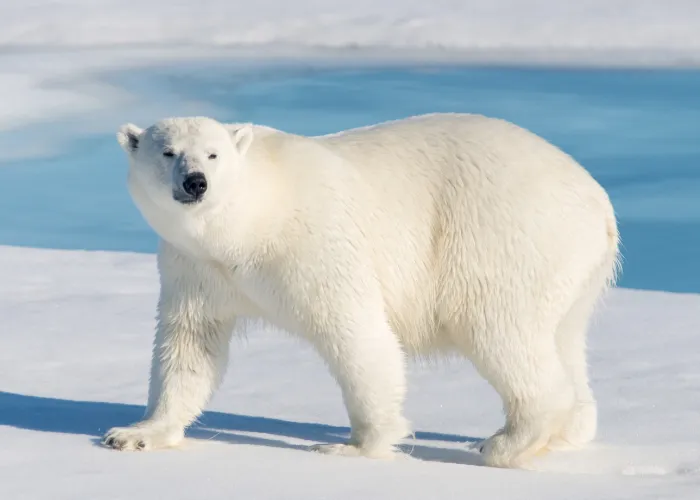
Polar bears are primarily carnivores, so they mostly eat other animals for their required caloric intake.
The prey they most prefer to eat is the seal, and they like to hunt the ringed seal and bearded seal in particular.
These seal species belong to the seals known as “ice seals.” Ice seals are called such because they rely entirely on ice to give birth, nurse their young, rest, and find prey.
When hunting, polar bears often lie in wait for long periods to catch a seal unaware.
They will wait at the seal’s breathing holes, which are cut into the ice using the claws under their flippers, and then when a seal comes up for air, the polar bear will strike.
Interestingly, they will typically only eat the seal’s skin and blubber, leaving most of the meat for other scavengers to pick over.
Polar bears will subsist entirely on seals if they can, but they may turn to other food sources so they don’t starve when scarce.
They will often eat walruses, whale carcasses, or garbage if they cannot find seals to munch on. Like the others in my group of bears article, Polar bears are technically omnivorous, although they vastly prefer to eat meat and fat off their prey.
They will gladly feast on food scraps and other garbage humans leave under certain circumstances. However, this may be rare because they usually don’t live close enough to human settlements to enjoy garbage meals.
They may also catch other arctic animals when they can, such as foxes, arctic birds, or the carcasses of any animals left out after they’ve died.
Finally, they’ll also branch out to eat eggs or fish when they find them. Polar bears love to fish, but it can sometimes be difficult to find fish in the harsh cold climates of the Arctic.
Given enough luck, they’ll often feast on whatever fish they can get their paws on, and this will usually include freshwater fish like salmon or trout during spawning seasons.
Climate Change Impact on Polar Bear Habitats
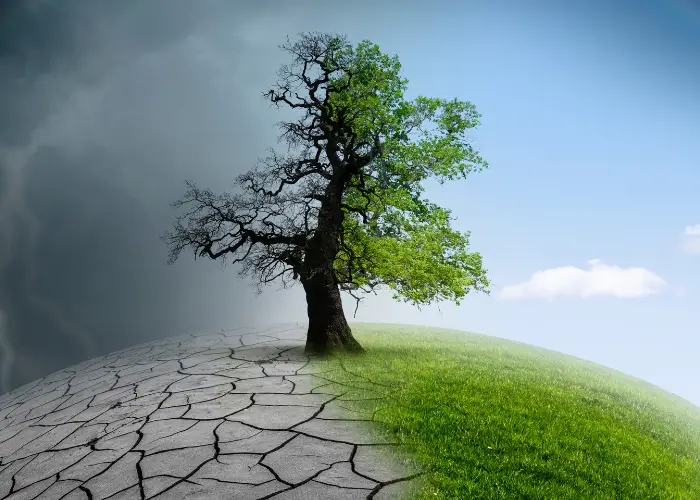
Climate change is causing the Arctic sea ice to melt alarmingly, directly impacting polar bear habitats.
As the ice shrinks, polar bears face challenges in finding sufficient food sources and must travel long distances to find suitable hunting grounds.
This situation may lead to declining polar bear populations and negative effects on the Arctic ecosystem.
Conservation Efforts and Ongoing Research

Several organizations and governments work together to protect polar bears and their ecosystems.
The Polar Bear Specialist Group, part of the International Union for Conservation of Nature (IUCN), researches and monitors polar bear populations to inform conservation strategies.
Additionally, organizations like the World Wildlife Fund (WWF) and Polar Bears International work to raise awareness about polar bears’ challenges and promote efforts to protect their habitats and reduce human impacts, such as climate change.
Check out the latest stories about polar bears and their conservation efforts.
Where Do Polar Bears Live?
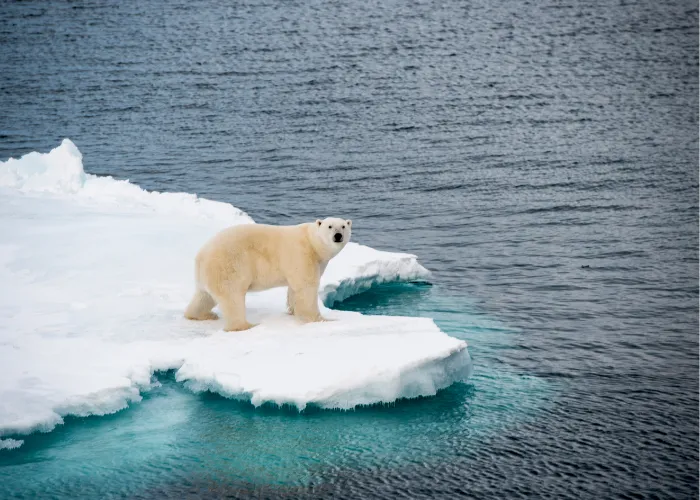
Polar bears live in the arctic regions of the world, primarily found in Alaska (in the United States), the upper reaches of Canada, Greenland, Denmark, Norway, and Russia. They may also occasionally be found as far as Iceland.
Going back to the main question of this article, polar bears do not eat penguins simply because they don’t live near each other.
No penguins live in northern arctic regions, which polar bears natively inhabit. Penguins are confined almost entirely to the Antarctic, which is in the Southern Hemisphere and is close to as far away from the Arctic as possible.
Polar bears are suited to living in such cold climates due to their unique anatomy. They have thick fur and fat layers that can range from 2 inches to 4 inches thick, keeping them warm despite the Arctic’s frigid wind and icy air.
They are also found in these areas because their prey is found. They couldn’t very well branch out to other parts of the world without their prey coming along, so they like to stick to the northern arctic regions to hunt.
These massive bears also spend much of their lives on the ice. This is why you may have heard that their habitats are being threatened by global warming. The less ice they have to live on, the less room they have to live and thrive.
[ RELATED ARTICLE: Do Bears Eat Deer? ]
Penguin Habitats: A Closer Look
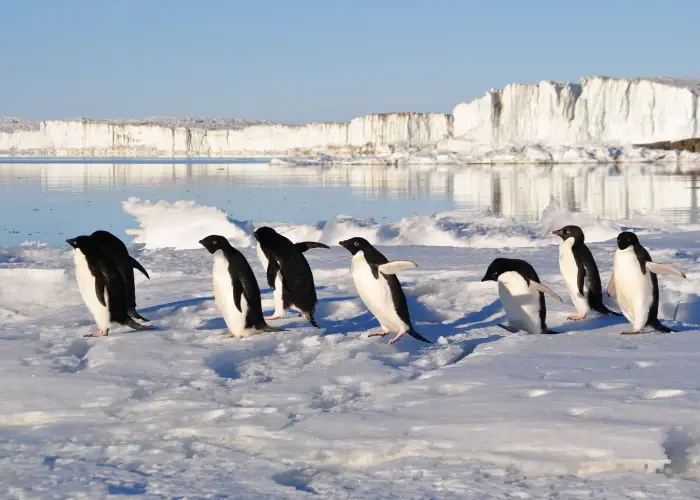
Penguins are primarily found in the Southern Hemisphere, with most species inhabiting the Antarctic region and nearby islands.
Unlike polar bears, penguins depend not solely on ice for survival but on the Southern Ocean’s cold waters for food, such as krill, fish, and squid.
Penguins have adapted to their harsh environment through specialized features like dense feathers for insulation, a streamlined body for efficient swimming, and strong flippers for propulsion.
Misconceptions and Myths
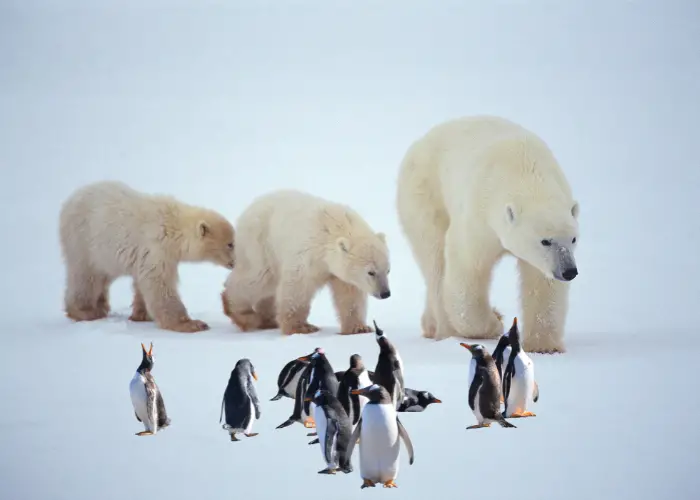
Misconception 1: Polar bears and penguins coexist in the same environment. Truth: As mentioned in your original content, polar bears and penguins live in entirely different regions of the world.
Polar bears are found in the Arctic, while penguins inhabit the Antarctic and other parts of the Southern Hemisphere. The two species never come into contact with each other in the wild.
Misconception 2: Polar bears are solely dependent on seals for their diet. Truth: Although seals are the primary food source for polar bears, they are opportunistic feeders and will consume other food sources when seals are scarce.
Their diet includes walruses, whale carcasses, fish, and plants. However, they do not eat penguins, as they never encounter them in their natural habitat.
Misconception 3: Penguins have no natural predators. Truth: Penguins do have natural predators, but polar bears are not among them. Predators of penguins include leopard seals, orcas, and various seabirds such as skuas and giant petrels. These predators prey on penguin chicks, eggs, and sometimes adult penguins.
Misconception 4: All polar bears and penguins live exclusively on ice. Truth: Both polar bears and penguins depend on ice for certain aspects of their lives, such as hunting and breeding.
However, not all species of penguins live exclusively in icy environments. Some species, like the African and the Galapagos penguin, inhabit warmer climates. Similarly, polar bears may spend significant time on land, particularly during the summer when sea ice recedes.
Final Thoughts
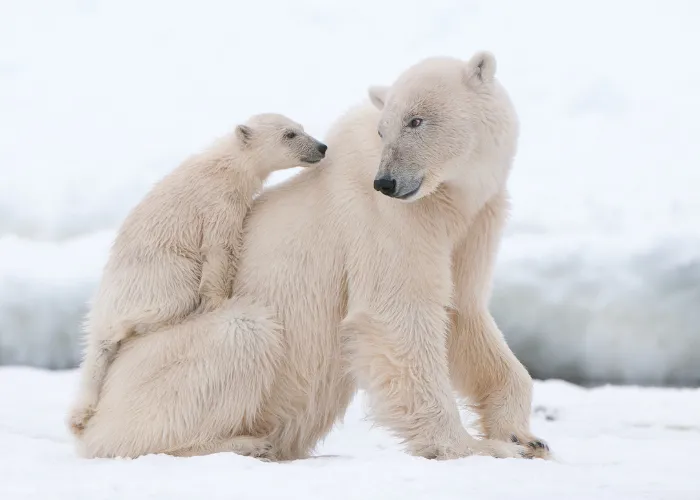
Polar bears and penguins’ unique adaptations, geographical separation, and different roles in the ecosystems they inhabit make it impossible for these two species to encounter each other.
Polar bears are mighty arctic predators that exist mostly on seals when they can help but also branch out to eat other prey when their favorite food is scarce.
Even though they don’t eat penguins, they prey on walruses, small arctic animals, arctic birds, and even garbage.
We hope the information we’ve outlined in this article has answered all your questions about whether or not polar bears eat penguins.
For more interesting animal facts, check out our other mammal articles!
REFERENCES:
1. World Wildlife Fund. (n.d.). Polar Bear. WWF. Retrieved April 26, 2023, from https://www.worldwildlife.org/species/polar-bear
2. Polar bear. (2023, April 24). In Wikipedia. https://en.wikipedia.org/wiki/Polar_bear
3. Penguin. (2023, April 16). In Wikipedia. https://en.wikipedia.org/wiki/Penguin

